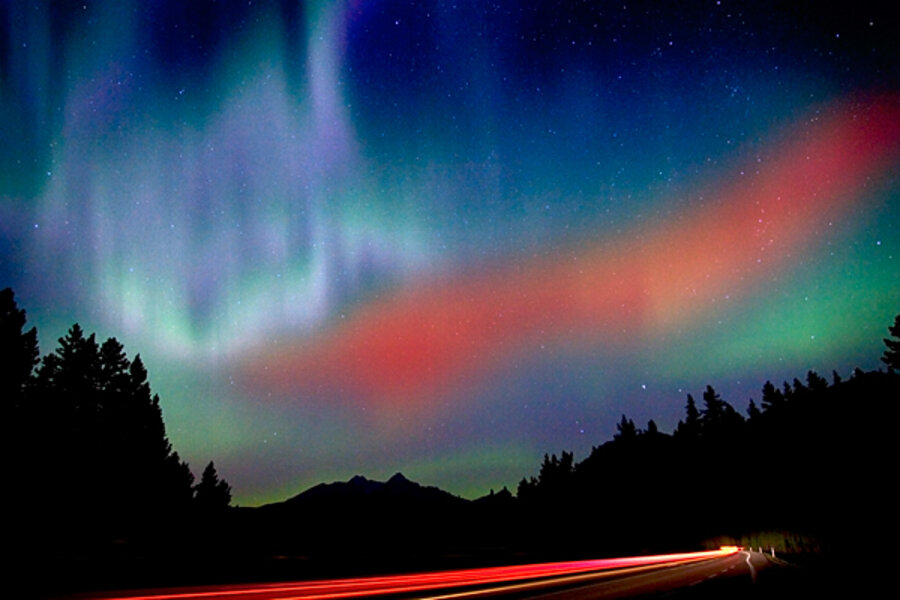Huge spacequakes shaking Earth's magnetic field
Loading...
Like an earthquake in space, so-called spacequakes are temblors in Earth's magnetic field caused by plasma flying off the sun that could help generate the colorful auroras that dance high in Earth's atmosphere, a new study suggests.
While felt most strongly in Earth orbit, these quakes can also reach all the way down to the surface of Earth itself.
"Magnetic reverberations have been detected at ground stations all around the globe, much like seismic detectors measure a large earthquake," said Vassilis Angelopoulos of UCLA, principle investigator of NASA's THEMIS spacecraft.
And these rumbles can pack a punch.
"The total energy in a spacequake can rival that of a magnitude 5 or 6 earthquake," according to Evgeny Panov of the Space Research Institute in Austria. Panov is first author of a paper reporting the results of a study on spacequakes in the April 2010 issue of Geophysical Research Letters. [Illustration: Spacequake in action.]
Spacequakes aren't the only unearthly temblors around. Scientists have also discovered starquakes (violent trembling inside stars), moonquakes and asteroid quakes (seismic tremors on the surface of the moon and asteroids, respectively). In fact, Earth can actually stimulate asteroidquakes when wayward space rocks fly too close to our planet.
In 2007, THEMIS discovered the precursors of spacequakes. The action begins in Earth's magnetic tail, which is stretched out like a windsock by the million-miles-per-hour solar wind. Sometimes the tail can become so stretched and tension-filled, it snaps back like an over-torqued rubber band.
Solar wind plasma trapped in the tail hurtles toward Earth. On more than one occasion, the five THEMIS spacecraft were in the line of fire when these "plasma jets" swept by. Clearly, the jets were going to hit Earth. But what would happen then? The fleet moved closer to the planet to find out.
"Now we know," said THEMIS project scientist David Sibeck of NASA's Goddard Space Flight Center in Greenbelt, Md. "Plasma jets trigger spacequakes."
According to THEMIS, the jets crash into the geomagnetic field some 18,600 miles (30,000 km) above Earth's equator. The impact sets off a rebounding process, in which the incoming plasma actually bounces up and down on the reverberating magnetic field, akin to a tennis ball bouncing up and down on a carpeted floor. The first bounce is a big one, followed by bounces of decreasing amplitude as energy is dissipated in the carpet.
"We've long suspected that something like this was happening," Sibeck said. "By observing the process in situ, however, THEMIS has discovered something new and surprising."
The surprise is plasma vortices, huge whirls of magnetized gas as wide as Earth itself, spinning on the verge of the quaking magnetic field.
The tails of these vortices are thought to funnel particles into Earth's atmosphere, sparking colorful auroras that dance over the sky.





